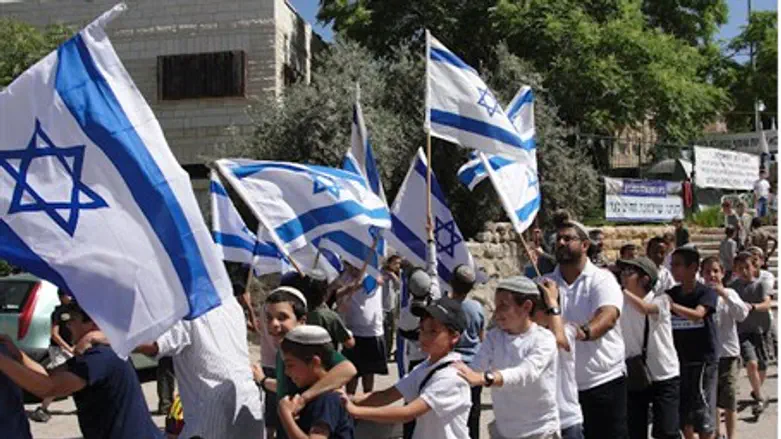
Hundreds of people, including schoolchildren, visited Hevron and the Tomb of the Patriarchs (Mearat Hamachpela) on Monday and celebrated the 45th anniversary of Hevron’s liberation in the 1967 Six Day War. The Tomb is the second holiest heritage site for Jews, after the Temple Mount.
During the period of Ottoman rule, Jews were only allowed to reach the level of seven steps at the tomb. In 1929, when the peaceful and pious Jews of Hevron were cruelly massacred by their Arab neighbors after years of living together and helping them, the surviving Jews were evacuated and no Jews lived in the city.
During Jordanian occupation, after the1949 War of Independence, no Jews were allowed to reach Hevron at all.
When Israeli troops advanced towards Hevron in the 1967 Six Day War, leading the way was then-IDF Chief Rabbi Shlomo Goren, who was the first to reach the Tomb of the Patriarchs and enter it. Many of the Arabs of Hevron met the IDF with white flags, fearing revenge for the horrible massacre, but all the rabbi and the troops wished for was to reach the holy site.
The visitors heard stories about the pioneers who came back to live in Hevron after 1967 and a special prayer service was held, in which visitors prayed for continued Jewish presence in Hevron.
The celebration concluded when the visitors started dancing and marching with the Israeli flag, similar to the Flag March which takes place in Jerusalem on Jerusalem Day. The dance took place near the recently evacuated Beit Hamachpela, and the participants called on the government to allow the Jews who bought the home to return to it.
